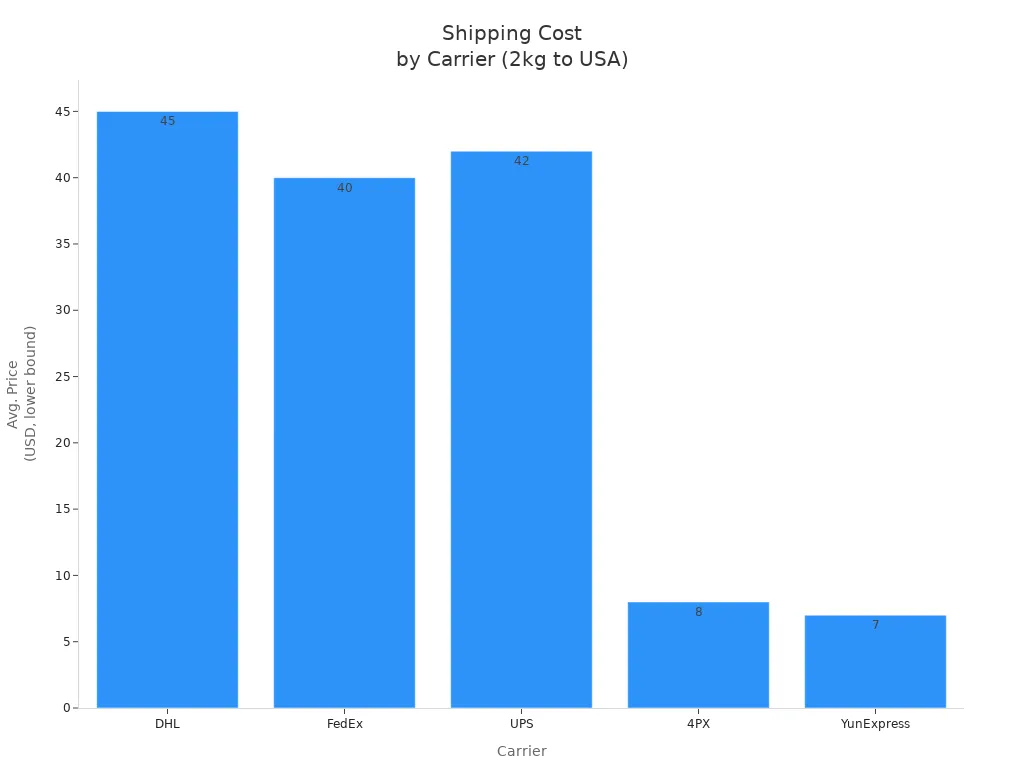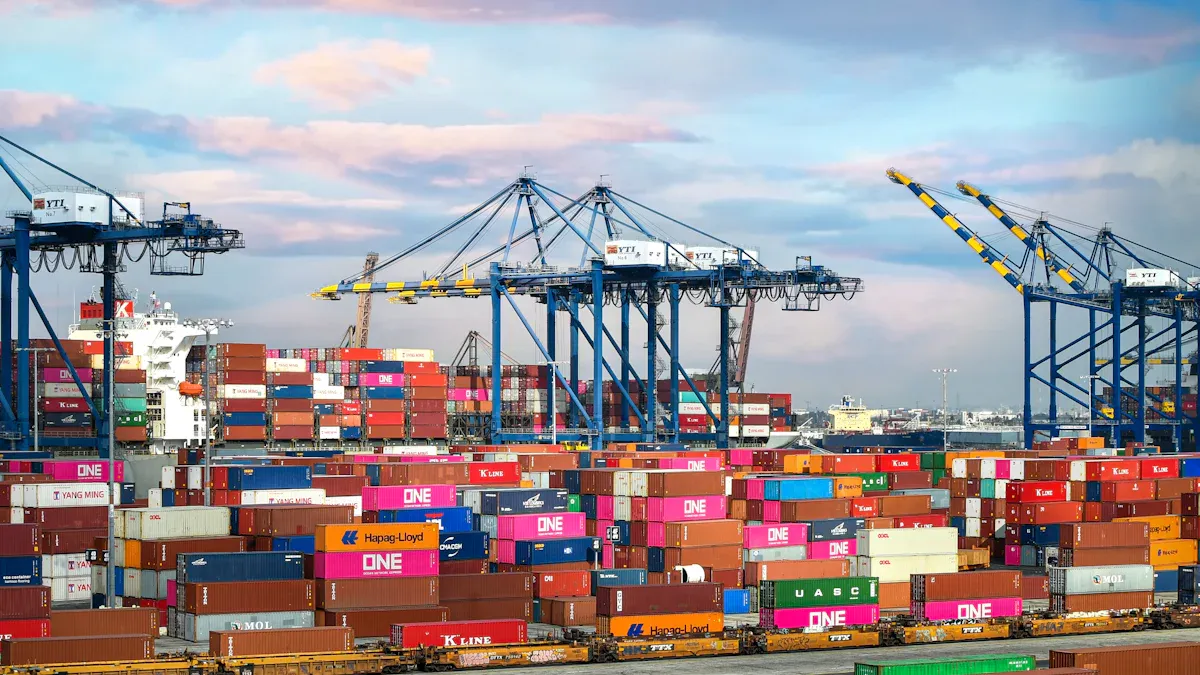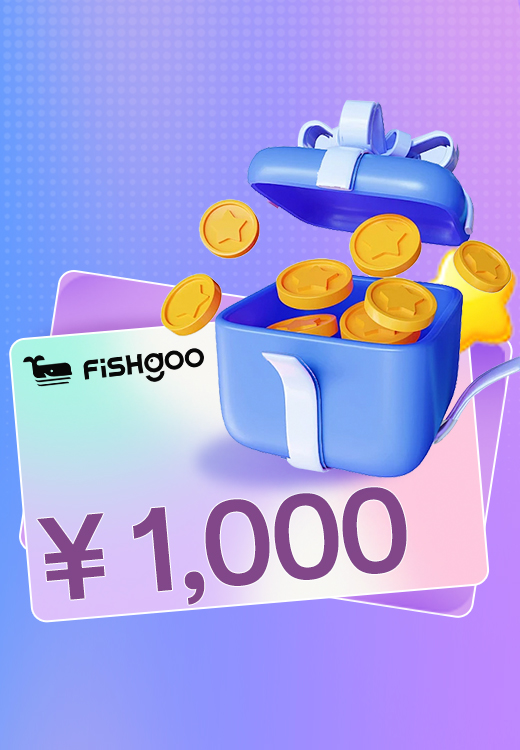How to Choose the Best Worldwide Shipping Provider for Your Business in 2025

You want your business to do well in a world where fast and reliable shipping is very important. More people are shopping online around the world. Countries like China, the UK, and Russia are leading in this area.
By 2025, eCommerce sales in the US will reach $1.17 trillion.
The global B2B market will be $32.11 trillion.
People choose stores that offer fast delivery and free shipping.
When you choose a worldwide shipping partner, look for reliability, speed, tracking, integration, and extra services. Many businesses now think these things are more important than cost.
Key Takeaways
Find out where your customers live before you pick a shipping provider. Know what your customers want and need.
Think about how fast and reliable the shipping is. Quick and trustworthy shipping helps customers trust your business. It also makes them want to buy again.
Pay attention to all shipping costs, even hidden ones. Always ask for a full list of charges. This helps you avoid any surprises.
Choose shipping providers that have real-time tracking. This lets you and your customers see where packages are.
Check customer support and integration choices. A provider that works well with your online store saves you time. It also helps you make fewer mistakes.
Define Your Worldwide Shipping Needs

Destinations and Markets
Before you pick a worldwide shipping provider, you need to know where your customers live. Start by looking at your main markets. Ask yourself which countries or regions order from you the most. Some places might have more growth potential than others. You should also check out new trends and what customers want in those areas.
Look at the size of each market and how fast it is growing.
Find out what problems your product solves for people in those places.
See how your products are different from your competitors.
Think about local laws, language, and what customers like.
Make sure you understand the economy and if the country is stable.
Check if the roads, airports, and technology are good enough for fast delivery.
Tip: The more you know about your target markets, the easier it is to choose the right shipping solutions.
Package Types and Frequency
You need to know what kinds of packages you send and how often you ship. Small and medium businesses often use different shipping methods based on their needs. Here’s a quick look:
Package Type | Description | Shipping Frequency Tips |
|---|---|---|
Less-than-Container Load (LCL) | A method that consolidates cargo from multiple shippers into a single container, ideal for low-volume shipments. | Plan ahead to save money. Track your shipments every month or quarter to get better rates. |
If you ship small packages every week, you might need a different worldwide shipping provider than someone who sends big orders once a month. Knowing your shipping habits helps you find a shipping partner that matches your business.
Budget and Delivery Expectations
Set a clear budget for your shipping costs. Decide how much you want to spend on each order. Think about how fast your customers expect to get their packages. Some buyers want the lowest price, while others care more about speed.
Write down your average order value and how much you can spend on shipping.
Decide if you want to offer free shipping or fast delivery.
Compare prices and delivery times from different providers.
Make sure your provider can meet your promises to customers.
When you know your needs, you can choose worldwide shipping options that fit your business and keep your customers happy.
Key Criteria for the Best Shipping Company
Picking the best shipping company is about more than price. You need a partner who is on time and helps your business grow. Happy customers come back to buy again. Here are things to check when you choose a worldwide shipping provider in 2025.
Delivery Speed and Reliability
Speed is important. Customers want their orders fast and safe. Check how long delivery takes in your main markets. Fast shipping makes customers return. Good companies use smart tools to stop delays.
Here is a table showing top providers:
Provider | Strengths | Delivery Speed | Reliability |
|---|---|---|---|
DHL | Fastest global delivery, strong in Europe and Asia | 1-3 days for urgent shipments | High |
FedEx | Big U.S. network, great for express services | 1-3 days for urgent shipments | High |
UPS | Cheap ground shipping, handles most packages daily | Varies by service | High |
You can also pick from these international options:
FedEx International Priority: 1-3 days for urgent shipments
USPS First Class Package International Service: Slower, good for less-urgent deliveries
To pick a reliable company, do these steps:
Use data to spot and stop delays early.
Give customers real-time updates.
Tip: Fast and reliable shipping builds trust and gets repeat sales.
Pricing and Fees
Shipping can get expensive, especially for international orders. You should know what you pay for. Many companies add extra fees for far places, heavy boxes, or special care. Always ask for a full list of costs before you choose.
Here is a table of common charges:
Charge Type | Description |
|---|---|
Remote Area Surcharges | Extra fees for pickups or deliveries far from main routes. |
Residential Pickup Fees | Charges for picking up from homes instead of businesses. |
Value-Added Services | Costs for extras like insurance or faster shipping. |
Correction and Reattempt Fees | Fees if the address is wrong or delivery needs a second try. |
Dangerous Goods Fees | Extra charges for items that need special handling. |
Oversized or Overweight Item Fees | Surcharges for big or heavy parcels. |
Special Handling Fees | Charges for unusual packaging or shapes. |
DDU (Deliver Duty Unpaid) | Recipient pays taxes and duties, which can slow things down. |
DDP (Deliver Duty Paid) | Sender pays taxes and duties upfront, sometimes with extra fees. |
Undervaluation Penalties | Costs if you declare a value lower than the real price. |
Let’s compare some carriers for a 2kg parcel to the USA:
Carrier | Avg. Price (2kg to USA) | Speed | Tracking | Best For |
|---|---|---|---|---|
DHL | $45–$60 | 3–5 days | ✅ Yes | Urgent parcels |
FedEx | $40–$55 | 4–6 days | ✅ Yes | B2B shipments |
UPS | $42–$58 | 4–7 days | ✅ Yes | Retail/E-commerce |
4PX | $8–$12 | 8–14 days | ✅ Basic | Budget e-commerce |
YunExpress | $7–$10 | 8–12 days | ✅ Basic | DTC brand shipments |

For small packages, budget carriers like 4PX or YunExpress are good. For big or urgent orders, DHL or FedEx may be better. Watch out for hidden fees like size charges or signature costs. These can surprise you.
Tracking and Transparency
You want to know where your packages are at all times. The best shipping company gives you real-time tracking and clear updates. This helps you fix problems fast and keeps customers happy.
Look for these tracking features:
Feature | Description |
|---|---|
Real-time location updates | See where your shipment is right now. |
Unified tracking numbers | Track packages from different carriers with one number. |
Predictive alerts | Get warnings if there might be a delay. |
Data analytics | Use shipping data to make better decisions. |
Multi-carrier integration | Track shipments from many companies in one place. |
Real-time map view | Watch your package move on a map. |
Customizable alerts | Set up notifications for key events. |
Mobile accessibility | Track shipments from your phone or tablet. |
With good tracking, you get:
Faster fixes when things go wrong
More trust from customers
Lower costs because you can plan better
Better following of trade rules
Customer Support and Integration
Great customer support is very important. If something goes wrong, you want help fast. The best shipping company answers in your language and replies quickly. They also help you connect your online store to their system.
Here’s what to look for:
Easy connection with your ecommerce platform (like Shopify, WooCommerce, or Magento)
Automated shipping tasks, like label printing and rate checks
Real-time tracking updates for your customers
Help with returns and refunds
Shipping integrations save time and cut mistakes. Tools like ShipStation or Easyship link your store to many carriers. Fishgoo, for example, offers flexible payment and connects with global payment systems. This makes selling to other countries easier.
Note: Connecting your systems means less trouble and happier customers.
Value-Added and Custom Services
Value-added services make a shipping company stand out. These extras save money, protect your products, and give customers a better experience.
Common value-added services are:
Service Type | Description |
|---|---|
Freight Forwarding | Air, sea, rail, and truck shipping for all package sizes. |
Customs Brokerage | Help with customs paperwork and clearance. |
Warehousing and Storage | Store your goods until you’re ready to ship. |
Cargo Insurance | Protect your shipments against loss or damage. |
Smart Packaging Solutions | Reinforced, waterproof, or shockproof packaging. |
Labeling and Bundling | Custom labels or product bundles for special orders. |
Quality Control | Inspection and photos before shipping. |
E-commerce Solutions | Buyer consolidation, real-time visibility, and order management. |
Fishgoo is a good example. You get strong packaging, clear prices, and cost comparison tools. Their cross-border logistics let you group orders, store them, and ship worldwide. You can pick extras like vacuum packaging, shockproof protection, and insurance. This helps you balance cost and speed for each order.
Tip: The right extra services can save you money and keep customers happy.
If you focus on these key points, you will find a worldwide shipping partner who helps your business and gives your customers a great experience every time.
Types of Worldwide Shipping Providers

Picking the right shipping carrier is important for your business. There are different types to choose from. Each type works best for certain needs. Let’s look at the main choices so you can pick the right shipping partner.
Global Couriers
Global couriers are big companies you see in many places. DHL, FedEx, and UPS are some examples. They deliver fast and handle small packages, papers, and urgent orders. If you have an online store and need quick, reliable shipping, these carriers are a good choice. They are very helpful when lots of people order at once and want their items fast.
Here is a table that shows how couriers and freight forwarders are different:
Feature | Couriers | Freight Forwarders |
|---|---|---|
Service Scope | Local and regional deliveries | Large volumes, many transport modes |
Customization | High flexibility | Many options for cost, schedule, or safety |
Speed | Fast, especially for small items | Flexible, sometimes slower |
Cost | Cheaper for small volumes | Better for bulk shipments |
Customer Service | Personalized | Structured support |
Geographic Coverage | Limited areas | Global reach |
Types of Goods Handled | Small parcels, fragile items | Bulk, hazardous, wide variety |
Tip: If you want fast and safe delivery for small packages, global couriers are a smart pick.
Postal and Regional Services
Postal and regional services include your country’s mail system and local delivery companies. These carriers cost less and can go to places big couriers might not reach. They are good for businesses that send many small packages or ship to faraway places.
Advantages of Regional Carriers | Limitations of Regional Carriers |
|---|---|
Using multiple carriers can get complex | |
Expanded parcel delivery capabilities | Harder to integrate with your systems |
Greater flexibility | — |
More sustainable | — |
You might use these carriers to save money or reach customers in hard-to-get places. But using more than one regional carrier can make tracking and connecting your systems harder.
Freight Forwarders and Aggregators
Freight forwarders and aggregators help move big shipments between countries. They use different carriers and ways to ship, like air, sea, or rail. This gives you more choices for price and speed. Companies with big or tricky shipping needs often use freight forwarders.
Freight forwarders let you choose the best way to ship your goods.
They help with large orders and special items.
Aggregators put together shipments from many sellers, which helps online stores ship across borders.
Platforms like Fishgoo give you all-in-one cross-border shipping. You can group orders, use storage, and pick from many carriers. This helps you save money, track your packages, and keep customers happy.
Note: If you send big or mixed orders, freight forwarders or aggregators can make shipping easier and help your business grow worldwide.
Comparing and Testing Shipping Partners
Picking a shipping partner is more than choosing a name you know. You should compare, test, and keep checking how each one works for your business. Here’s how you can do this step by step.
Research and Reviews
Start by looking up information. Find reviews and ratings from other businesses that ship worldwide. You can see these on business forums, ecommerce groups, and trusted review sites. Notice what people say about delivery speed, lost packages, and customer service.
Shipping has changed a lot since the 2008 financial crisis. Now, customers want better, cheaper, and more reliable service. Freight forwarders and shipping companies must meet these new needs. When reading reviews, check if a provider handles new problems well and cares about customers. This helps you find companies that really care about good service.
Tip: Don’t just trust what the company says. Look for real feedback from people who ship to your target countries.
Rate Calculators and Quotes
After you have a list, use online rate calculators and quote tools to compare prices. These tools give you quick quotes from different carriers. Enter your package size, weight, where it’s going, and how fast you want it delivered. The calculator shows prices side by side, so you can pick what fits your budget.
Online rate calculators make shipping costs easy to see. They help you avoid surprises and choose the best deal for your shipments. For example, an International Shipping Comparison Calculator lets you see rates from many carriers at once. This makes it simple to pick the cheapest option for your ecommerce orders.
Note: Always check if the quote includes extra fees like fuel surcharges or remote area delivery.
Trial Shipments and Performance
Before you choose a shipping partner, send a few test packages. This is the best way to see how they handle real orders. Track each shipment and write down what happens at every step.
Here are some important things to watch during your test runs:
Metric | Definition | Importance |
|---|---|---|
On-Time Delivery Rate | How many shipments arrive on or before the promised date. | Customers remember late deliveries. Tracking helps spot delays. |
First Scan Time | Time between label creation and the first scan by the carrier. | Long times may mean delays; short times mean things run smoothly. |
Transit Time Variability | Difference between expected and actual delivery times. | Changes affect predictability and customer experience. |
Damage and Claims Rate | How many shipments arrive damaged or need reimbursement. | Damage hurts your business; tracking helps you improve. |
Tracking Visibility | How many orders have accurate, real-time tracking updates. | Poor tracking means more customer questions and frustration. |
Cost per Shipment | Total cost of each shipment, including extra charges. | Knowing costs helps you compare value and rates. |
Exception Rate | How many shipments have delays, holds, or get lost. | High rates slow fulfillment and create more support work. |
Keep track of these numbers for each provider. This helps you see which company is on time, keeps packages safe, and gives you the best value.
Pro Tip: Use test shipments to check international shipping. This shows how well a provider handles customs, tracking, and delivery in different countries.
Ongoing Monitoring and Customer Feedback
Your job isn’t done after you pick a shipping partner. Keep checking how they do by listening to your customers and watching key numbers. Ask buyers if their packages arrived on time and in good shape. Watch for complaints about lost items or slow delivery.
Customer feedback and reviews are very helpful. They help you measure service quality, delivery times, and how fast the shipping company fixes problems. Use this information to review your shipping partners often. If you see too many problems, it might be time to try a new provider.
Remember: The best shipping partner today might not be the best tomorrow. Keep testing, comparing, and listening to your customers to help your business grow.
Pro Tips for Reliable Shipping
Customs and Documentation
Getting customs paperwork right is very important. If you make mistakes, your packages can get stuck or sent back. Here are some common mistakes you should not make:
Customs declaration errors
Shipping paperwork mistakes
Wrong customs entries
Forms that are not complete
Wrong information
Missing support papers
Trade compliance mistakes
You should check these things again:
Use your company letterhead.
Give the right phone number.
Add the receiver’s tax ID.
Write the terms of sale (incoterms).
Use the correct currency code.
Fill in the type of export or import.
If you miss any of these steps, you could have delays or extra fees. Your shipment might even get rejected at the border. Fishgoo helps you with customs forms and trade compliance. This makes your ecommerce orders move faster.
Packaging and Insurance
Good packaging keeps your products safe and customers happy. Use the right box size and add fillers. Wrap items with soft materials. If something is fragile, make sure it cannot move. Mark boxes with “Fragile” or “This side up” if needed.
Pick direct shipping routes with fewer stops.
Work with carriers who deliver safely.
Get insurance to cover loss or damage.
Fishgoo gives you strong, waterproof, and shockproof packaging. You can also choose insurance for extra safety. These choices help you keep delivery quality high and meet what customers want.
Communication and Tracking
You need to keep your customers updated. Real-time tracking and alerts show buyers where their package is. This builds trust and stops questions about delivery times. Here is how tracking helps:
Benefit | Explanation |
|---|---|
Proactive Measures | Real-time tracking helps you avoid delays and keep customers happy. |
Instant Alerts | You get messages about problems right away and can fix them fast. |
Transparency | Customers see updates, so they trust you more. |
Fewer Inquiries | Fast updates mean fewer calls for help. |
Better Experience | Customers feel in control and trust your shipping. |
Fishgoo’s flexible shipping options help you with tricky shipping needs. You can keep everyone updated. When you use quality control, order grouping, and tracking, shipping is easier and customers are happier.
Now you know how to choose the best worldwide shipping provider. First, find a partner that fits your needs. As your business gets bigger, keep checking your shipping plan. Follow these steps to stay ahead:
Check how well your carriers do by using simple goals.
Give your customers more than one way to ship.
Learn about new shipping rules and changes from carriers.
Try extra services to make customers happier and ship faster.
How often do you look at carrier results? |
Are you using the newest shipping tools? |
What new services could help your business grow? |
Keep making your shipping better. Good partners and smart choices help your business do well. 🚀
FAQ
What is international shipping and how does it work?
International shipping is when you send things to another country. You pick a provider and fill out some forms. You pay for the delivery. The company takes care of customs. They bring your package to the right place.
How can I lower my international shipping costs?
You can save money by sending many packages together. Picking slower delivery can also help you spend less. Try value-added services to get more for your money. Always compare prices from different providers. Some platforms, like Fishgoo, give discounts and flexible choices for shipping.
What documents do I need for international shipping?
You need a customs declaration, an invoice, and a shipping label. Some countries want extra forms. Always check the rules for the country you are shipping to. Fishgoo helps you get the right papers ready for shipping.
How do I track my international shipping order?
Most providers give you a tracking number for your order. You can enter this number on their website to see updates. Fishgoo lets you track your order in real time. You always know where your package is.
What should I do if my international shipping package is delayed?
First, look at the tracking for your order. Delays can happen because of customs or bad weather. Contact your provider if you need help. Fishgoo’s support team can help you fix problems with shipping fast.
See Also
Key Global Shipping Solutions for Newbies in 2025
Selecting the Right Taobao Agent for International Buyers in 2025
Shopping Online from China: Best Platforms and Shipping Advice in 2025
Enhancing Your International E-Commerce Logistics for Success


